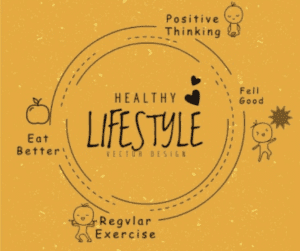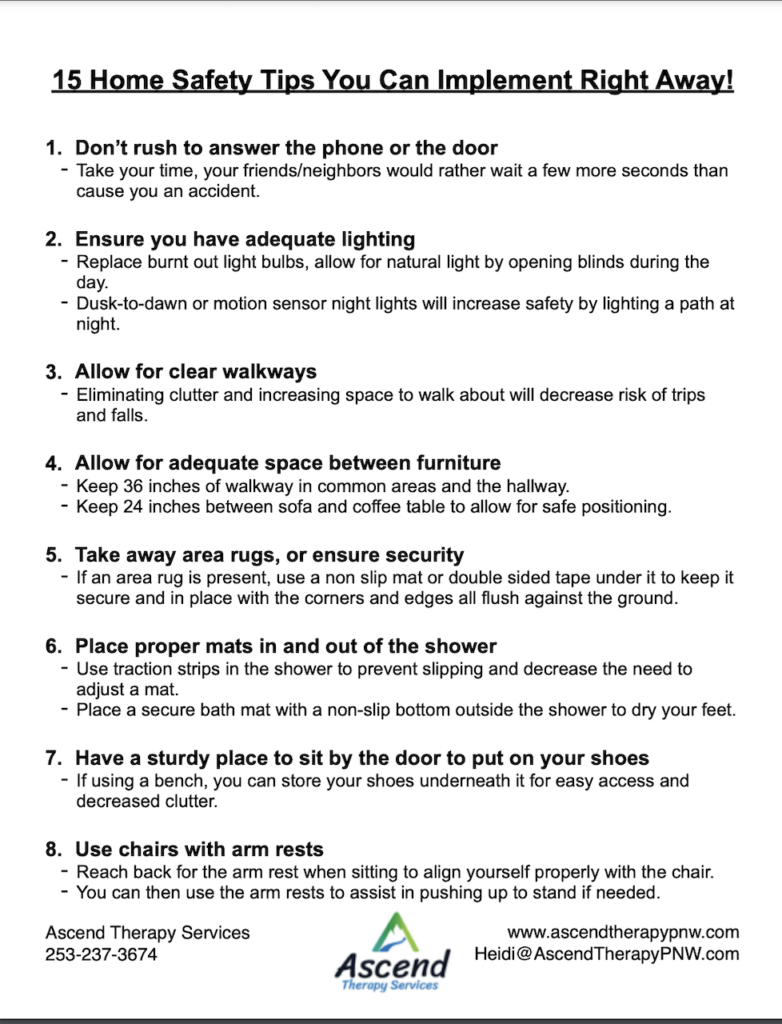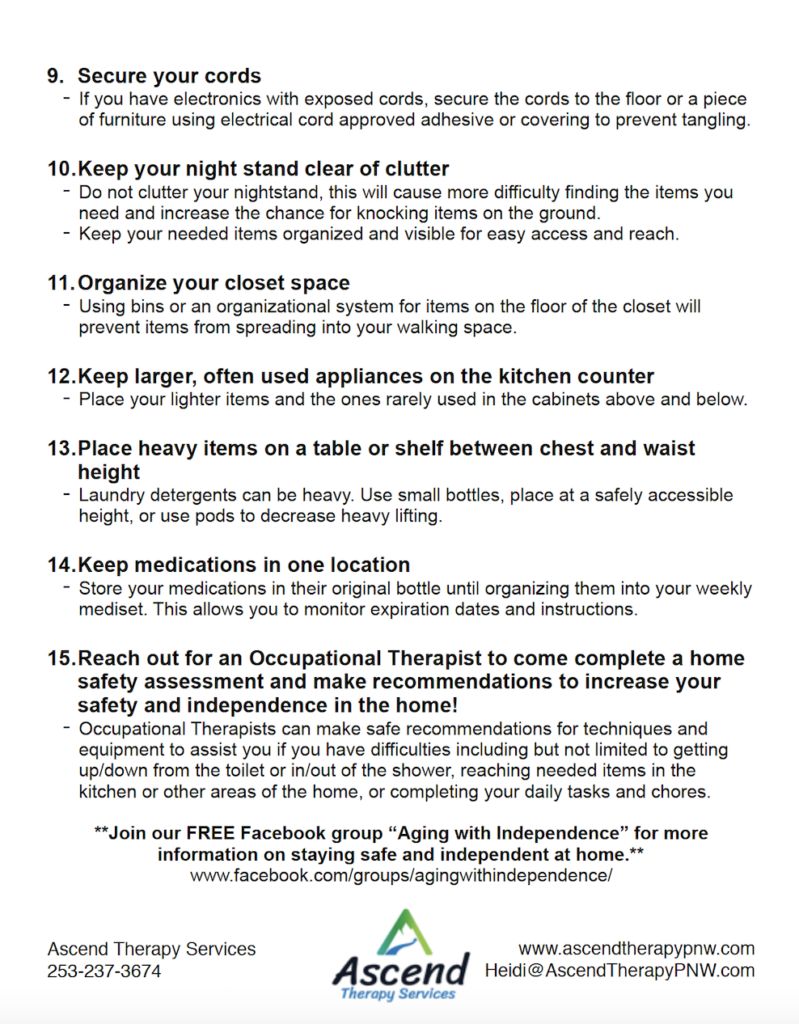TIPS FOR SUCCESS WITH THE COLLEGE APPLICATION PROCESS
By Mary-Kaye Soderlind

YOU PROBABLY SHOULD KNOW
- A college admission staff person reads 10 applications an hour during peak season
- Make sure your application is complete
- Be sure you are answering the questions that are asked.
- In the six minutes an admissions staff spends reading your application he/she wants to get to know you, wants to discern whether you will be a good fit for the institution and what you might offer to the college
- Grades and co-curricular activities are generally weighted more heavily than standardized test scores and recommendations.
THE ESSAY
Common Application- 650 words
Specific questions from individual colleges- 250 words
- Read the instructions
- Write a compelling introduction
- Use your inner voice, be true to yourself
- Avoid clichés
- Use good examples to support your ideas
- “Go deep”, don’t write your life story
- Write how you speak
- Your essay is a good time to be self-centered (If you are passionate about something, share it)
- Before you begin, reflect on why wat you are going to write is important
- START EARLY Write several drafts
- Proof read, Spell Check is not enough
- Show the draft of your essay to two people, not more. Too many ideas and suggestions become confusing and you run the risk of the essay not being in your voice.
OTHER IDEAS TO PONDER
- How have you impacted your community?
- How do you take care of yourself, your own mental and physical wellness?
- One good recommendation from a teacher is better than three average ones.
- Do you know the difference between “Early Action” and “Early Decision”?
- Be sure to check prerequisite curriculum requirements for majors that interest you
- Usually, it isn’t necessary to declare a major as part of the application process—music, art, dance and theatre may be exceptions as these majors require auditions or portfolios
- Do you know the difference between Test Optional and Test Blind? A good rule of thumb is: If your standardized test scores (SAT ACT) are good send them, if not don’t
- If possible, visit campuses and talk to current students
PARENT INFORMATION
- College is expensive
- Know the FAFSA process and start working on it early
- Colleges work hard to give as many scholarships and grants as possible.
- Every year scholarship money from an incredible number of sources is
- Don’t immediately reject a college because of cost
- You can be most helpful to your student by helping him or her keep track oof deadlines, by being a constant source of encouragement and by starting early to work on your part of the financial plan
- Be prepared for the highs and lows of the process knowing that it doesn’t last forever
REMEMBER
- Don’t overthink the application process
- Remember the Ivy league schools and schools like Stanford, MIT and Cal Tech may only accept four percent or less of their applicants, but most schools accept at least 2/3 of their applicants
- Not everyone needs to attend a four- year institution. Community colleges and trade schools are also strong options
- If you have special needs, be sure to male those needs known
- You need to feel as comfortable with the college you have chosen as they are comfortable in offering you acceptance. College acceptance is a two- way process
- If you don’t get accepted to your first-choice college, it is not the end of the world nor does a rejection define you as an individual.
GOOD LUCK!
Printable Brochures - Basic Car Seat Safety by Laura Miccile
Grow and Go Car Seat Safety
King County Car Seat Inspections (In-person and Virtual) - www.kingcounty.gov/carseats
Car Seat Safety Information
Washington State CPS Program- CPS Flyers (Multiple languages)
https://wadrivetozero.com/car-seats/
American Academy of Pediatrics- English and Spanish
https://www.healthychildren.org/English/safety-prevention/on-the-go/Pages/default.aspx
Ultimate Care Seat Guide- English and Spanish
https://www.safekids.org/ultimate-car-seat-guide/
Safe Kids Worldwide (Handouts in various languages)
https://www.safekids.org/car-seat
Safe Kids Worldwide- Virtual and Online Resources
https://safekids.org/blog/check-your-car-seat-today-these-virtual-and-online-resources
CPS Board- Car Seat Safety
https://www.cpsboard.org/car-seat-safety/
Safercar.gov- Comprehensive CPS information for parents and caregivers (English and Spanish)
https://www.nhtsa.gov/parents-and-caregivers
Centers for Disease Control- Child Passenger Safety
https://www.cdc.gov/injury/features/child-passenger-safety/index.html
Car Seat Manufacturer’s websites
https://live-skcert.pantheonsite.io/sites/default/files/2020-03/2020%20CPS%20Manufacturer%20List.pdf
Online Child Passenger Safety classes
Safe Kids Worldwide- Basic Child Passenger Safety course
https://www.udemy.com/course/basic-child-passenger-safety/
NHTSA and National Safety Council- Child Passenger Safety Basics e-Learning Course
https://www.cpsboard.org/resource-center/trainings/
5/2021
WHAT IS SPIRITUAL DIRECTION?
By David Richardson, Parishioner and Spiritual Director
That was my question in 1999 … what follows is my journey to finding the answer. I read an article which discussed a Program for training applicants in the Ministry of Spiritual Direction. Not exactly sure what all this entailed I spoke with our Pastor, Fr. Jack Walmsley about this ministry. We decided that the best way to better understand Spiritual Direction was to first experience it. So, for the next 3 years he served as my Spiritual Director. I found this experience to be very helpful toward understanding myself and my life experiences. Having a few years of this experience as a directee, and with our Pastor’s encouragement, I entered a program to be trained as a Spiritual Director which I completed in 2004.
Spiritual Direction is sometimes called spiritual guidance or spiritual companionship. Spiritual direction is an on-going relationship in which a person desirous of being attentive to his or her spiritual journey regularly meets with a spiritual director (usually once a month) for the purpose of becoming more attuned to the presence of God’s Spirit in all of life. It encourages one to explore a closer relationship with God. Spiritual direction aids a person in deepening their reflection on the experiences in their daily life. It’s important to note that spiritual direction is really not about being “directed”, rather, it is a shared journey in which the sign-posts along the way are examined together.
A spiritual director is someone who, with you, pays attention to your interior life, who cares about your deeper self, who helps you interpret your ongoing experiences and learn the art of discernment (the knack of knowing which inner voices to trust and, which to greet with suspicion), and who listens, encourages and challenges you. Spiritual directors continue to tend their own spiritual life by engaging in ongoing education, participating in confidential supervision with other spiritual directors, and meeting with one’s own spiritual director. A spiritual directors’ training focuses on many topics as they apply to this ministry which includes: studying the art of listening, scripture, lives of the saints, basic concepts of depth psychology & transformation, prayer, discernment, the practice & models of spiritual direction, the stages of spiritual growth & obstacles to spiritual growth, the use of personality tools, dream work, inner healing, life cycle concepts, loss & grief, spiritual warfare and the New Age movement, among other topics.
Over the past 18 years I’ve been very blessed with the many directees I’ve worked with and have found my own spiritual journey enriched in the process. I personally work out of the Ignatian Spirituality Center located on the campus of St. Joseph Parish in Seattle. A part of the service of any of the Spirituality Centers is to interview the inquiring directee candidate to ensure a compatible and well-suited match with a Spiritual director registered with their Center. In the first meeting both director and directee have the opportunity to get to know each other, background, etc. to confirm the fit is comfortable. Together they establish a time to meet and the frequency. Periodically, they will assess the fruitfulness of their meetings and as their journey unfolds on some occasions, the two will conclude their journeying together and another Spiritual Director may be engaged at the choosing of the directee.
You can obtain a spiritual director by contacting the Ignatian Spirituality Center in Seattle (206-329-4824), Benedictine Sisters @ St. Placid Prior in Lacy (360-438-2595), Spiritual Directors International (Bellevue office, 425-455-1565).
THE ENNEAGRAM: A PATHWAY FOR PERSONAL GROWTH
By Dave Richardson, Parishioner and Spiritual Director
The Enneagram is a powerful, spiritual tool for helping participants grow in their relationship with God, to experience self-awareness, and thus, to realize wholeness. With the aid of this tool individuals will bring harmony to the community to which they belong.

The Enneagram (from the Greek ennea, “nine” and grammos, “points”) is a personality typology that is believed to have its roots in an ancient oral tradition.
These habitual patterns were first codified by Fathers of the Early Church which lead to the definition of the Seven Cardinal Sins. Modern Psychology has identified two additional patterns, now totaling nine types. The nine points on the Enneagram figure represent nine habitual patterns of thought, emotions, and behaviors. Symbolically, the Enneagram circle with the placement of nine equidistant points can be thought of as nine windows through which the area of reality is viewed. The personality types that stand on the same point tend to view the world and people in a similar manner and are given the same numerical identification. The numbers have no significance and are utilized because they are “value neutral”. Type is defined, in general, as a group of individuals characterized by a specific set of personality features. The Enneagram typology groups persons according to motivation. It is well to remember that the Enneagram is more than a typology. Inherent within it, is the call to conversion. A call to turn away from our “old” ways.
One goal of Enneagram work is to gain “self-knowledge” by discerning one’s own EPT (Enneagram Personality Type). Secondly, one needs to claim the insights revealed by it and thus begin the process of becoming freer and less influenced by conditioned behavior. The fruits of this work will lead to greater openness to God and healthier relationships with others.
“Lack of self-knowledge leads to wrongly knowing everything else.”
- St. Bonaventure
Taking Care of your Body

Life is taxing right now. COVID, national and international politics, life! It can get to you and lead to stress and worry. There are ways to decrease the anxiety and take care of your self so you can feel better, be a better partner, and live longer. A few ways to help yourself:
Get Active/Be Active
The current recommendation of 150 minutes a week (about 20 minutes/day) of moderate exercise can
• Improve your thinking
• Reduce anxiety
• Improve your sleep
• Decrease depression and anxiety
• Decrease blood pressure
• Decrease risk of stroke or heart attack
• Decrease risk of diabetes
• Help maintain weight or help with weight loss
• Strengthen bones and muscles
www.healthline.com//nutrition/10-benefits-of-exercise
www.heart.org/en/healthy-living
www.cdc.gov/physicalactivity/index.html
Get Your Rest
Most adults need 7-9 hours of sleep every night but 1 in 3 report getting less. Sleep is important to your feeling of well being but it also can contribute to health problems including type 2 diabetes, obesity and high blood pressure. Ways to improve your sleep include:
• Develop a sleep schedule-get up and go to bed at about the same time every day.
• Get enough natural light. Try to get outside during the day.
• Get some physical exercise every day, but not in the last hours leading up to your bedtime.
• Don’t drink alcohol or eat foods high in sugar or fat before bed.
• Keep your bedroom cool and dark.
• Avoid artificial light before bed. Use a blue light filter if using a computer or cell phone near bedtime.
www.sleepfoundation.org
www.cdc.gov/sleep
www.cdc.gov/bloodpressure/sleep.htm
https://health.gov/myhealthfinder/topics/everyday-healthy-living/mental-health-and-relationships/get-enough-sleep
Diet
Americans claim one of the highest rates of obesity in the world-42.4% in 2018. Obesity can lead to many chronic diseases including type 2 diabetes, heart disease and some cancers. Obesity can lead to preventable and premature deaths. Eating a healthy, varied diet can help lose weight and maintain a healthy weight.
• Enjoy fruits, vegetables, whole grains and fat free or low fat milk and milk products.
• Eat a variety of lean proteins-seafoods, lean meats and poultry, legumes-beans, soy, nuts and seeds.
• Eat low saturated fats, limit transfers, cholesterol added sugars and salts.
• Stay within your daily calorie needs.
www.cdc.gov/healthyweight/
www.cdc.gov/nutrition/resources-publications/benefits-of-healthy-eating.html
www.hsph.harvard.edu/nutritionsource/healthy-eating-plate/
Oral Hygiene
Gum disease has been linked to heart disease, type 2 diabetes, rheumatoid arthritis, strokes and osteoporosis. Gum disease is the most common chronic inflammatory disease in the world. It can introduce inflammation through the mouth that can be spread to other parts of the body by the bloodstream. This can lead to inflammation and infection in other body parts, including the heart and brain. Behaviors that lead to poor oral hygiene include lack of daily brushing and flossing, excessive alcohol intake, tobacco use and poor diet. Keys to good oral health include:
• Daily brushing
• Daily flossing
• Regular dental care
www.webmd.com/oral-health/default.htm
www.ada.org/~/media/ADA/Publications/Files/patient_61.ashx.
www.healthypeople.gov/2020/topics-objectives/topic/oral-health
Stress
Stress is a part of every day life. Some stress is actually good for you but stress that leads to lack of sleep, too much alcohol, poor performance at work or home is problematic. These issues can lead to chronic diseases such as depression, anxiety, stroke and heart disease and a poor quality of life. Stress management techniques:
• Exercise
• Physical activity increases your endorphins, the feel good neurotransmitters in your brain
• Sleep
• Adults need 7-9 hours of sleep every night.
• A cool room without distractions (cellphones, computers) is helpful.
• Healthy diet
• Eat a diet low in saturated fats and sugars.
• Limit your alcohol.
• Relaxation techniques
• Yoga
• Meditation
• Deep breathing techniques
• Ask for help when you need it
• Family or friends can offer support or guidance
• See your family health care provider
www.prevention.va.gov/MPT/2013/docs/managestressworkbook_Dec2013.pdf
www.cdc.gov/howrightnow/resources/coping-with-stress
www.cdc.gov/mentalhealth/stress-coping/cope-with-stress/index.html
Prevention Is Better Than Cure
Desiderius Erasmus
TIPS FOR POSITIVE FAMILY COMMUNICATION
by Irene Cervantes, Masters in Counseling and Experienced Chaplain
- LISTEN TO UNDERSTAND
- DON'T INTERRUPT
- TONE OF VOICE MATTERS
- MAKE EYE CONTACT
- USE OPEN BODY LANGUAGE
CATCH YOUR CHILD BEING GOOD - USE WORDS OF ENCOURAGEMENT
"THANKS FOR HELPING ME." "I APPRECIATE WHAT YOU DID."
"THAT'S GREAT." "TERRIFIC...GOOD JOB:" "TELL ME MORE."
"YOU CAN DO IT." "I LOVE YOU."
WAYS TO TEACH YOUR CHILD TO LEARN TO LISTEN BETTER
- READ TO YOUR CHILD FREQUENTLY
- SIT TOGETHER WITH EYES CLOSED AND LISTEN TO SOUNDS
- LISTEN & LEARN SONGS OR POEMS
- PLAY A RHYTHM WITH PENCILS OF BY CLAPPING HANDS
- GIVE A SERIES OF COMMANDS (WALK TO DOOR, JUMP ON ONE FOOT, PULL YOUR EAR, CLOSE ONE EYE) - THEN HAVE CHILD GIVE YOU COMMANDS
TIPS PARA COMUNICACIÓN POSITIVA EN FAMILIA
- ESCUCHA PARA COMPRENDER
- NO INTERRUMPAS
- TONO DE VOZ IMPORTANTE
- MIRA A LA PERSONA OJO A OJO
- EL LENGUAJE DE TU CUERPO
CUANDO VEA A SU HIJO HACIENDO BIEN USE PALABRAS PARA ALENTARLO
"GRACIAS POR AYUDARME." "APRECIO LO QUE HICISTE."
"BUEN TRABAJO." "CUENTAME MAS." "TE QUIERO MUCH."
COMO ENSENARLE A SU NINO A ESCUCHAR
- LEER FRECUENTEMENTE CON EL
- SIÉNTENSE JUNTOS CON LOS OJOS CERRADOS Y ESCUCHEN EN SILENCIO
- TRATEN DE HACER UN RITMO CON UN LÁPIZ EN LA MESA CON LAS MANOS
- .DE UNA SERIE DE INSTRUCCIONES (CAMINA A LA PUERTA, BRINCA EN UN PIE, ESTIRA TU OREJA, CIERRA UN OJO) Y LUEGO EL LE DA LAS INSTRUCCIONES A USTE

Does Your Backpack Fit Just Right??
It’s that time of year again, getting everything ready for kids to head back to school! For many kids a return to in-person learning means a need to get a new backpack to carry their many school supplies. We often think about ensuring that a child has clothes, coats and shoes that fit appropriately, but do we stop to make sure that their backpack fits well and is correctly positioned on their body?
Back pain is typically thought of as an adult problem, but the truth is that having excessive strain on the back can cause pain and discomfort at any age in the back, shoulders and neck. Making sure your child’s backpack is worn appropriately can help decrease their chances of having pain. Here are some things to keep in mind:
- The backpack should be worn in the middle of the back. Wearing the backpack too low may cause a child to adjust their posture to accommodate a load by slouching forward or arching their back. Over time, this can cause pain and injury.
- The backpack should have wide, well padded shoulder straps, and both should be worn when the backpack is on. Using only one shoulder strap may cause asymmetrical posture and pain.
- Be aware of the load – ideally the weight of the backpack should be no more than 10-15% of the child’s body weight. Watch your child take their backpack on and off to make sure they can do so without struggling. If you find that their backpack is too heavy, make sure they are only carrying what is essential and are able to stop by lockers between classes to avoid having too many heavy books. Other options may be a rolling backpack or duplicate materials at home.

If your child is having back, neck or shoulder pain, they may benefit from an evaluation by a physical therapist. The therapist can look at their strength and movement, as well as assess their backpack fit.
THE SIMPLE GIFTS OF HOSPICE THAT WILL SURPRISE YOU (Part One)
What could be surprising about hospice? Hospice is a medical program filled with God’s Grace at the end of life. Some people assume hospice is for the final few days of life. A wise physician who is honest about end-of-life projections will encourage hospice benefits. Hospice is a free service available to all people who are 6 months away from their projected death. It allows the dying to accept their death and attempt to reconcile unfinished business with the help of a caring professional medical team. How is hospice provided in the final stages of life?
Some folks desire to continue painful treatments beyond realistic recommendations. A caring physician knows when to use the right words to recommend hospice. Instead of desires for healing, some folks survive peacefully on hospice longer than expected. While declining in health they benefit by the relationships of loved ones and the caring hospice team that guides them to a peaceful acceptance of death. Relationships can be reconciled .The team provides physical as well as soul comfort.
A team includes a registered nurse, social worker, certified nursing assistant and board-certified chaplain. Hospice is a patient-oriented service. The hospice team follows the patient and family’s needs and desires. Together they explore and create a documented plan of care guided by a strong emphasis on comfort.
The registered nurse is the leader and point person of the team who provides the medical expertise. The Social worker helps with end-of-life paperwork such as wills, available resources, and healthcare therapies. Massages are free!!! The certified nursing assistant helps with personal hygiene. The chaplain assesses and addresses spiritual pain. All are on call as needed. They keep an eye out specifically for physical pain and extraordinary family dysfunction, which could hamper a patient’s peaceful death. The team meets every other week to discuss the patients care with a physician. The best teamwork happens when all members, communicate, bond and build patient/family/relationships.
If a loved one is nearing death, hopefully they will entertain the graces of Hospice. If a physician is unaware of hospice benefits the family can call any Hospice directly. Hospice care is provided in private or adult family homes, nursing, and assisted living facilities. It is a free medical program. That is why it is surprising and considered a gift of God’s Grace.
Page Lane MA BCC National Catholic Board Certified Chaplain.
THE SIMPLE GIFTS OF HOSPICE: PART TWO THE HOSPICE CHAPLAIN
Why is a hospice chaplain a gift? A chaplain is a clinical member of the medical team. Hospitals and hospices require Chaplains to receive theological master’s degrees, clinical training, and national board certification. Many chaplains are ordained. Some are priests. Catholic lay chaplains are endorsed by their pastor, diocese, and the National Association of Catholic Chaplains. Their roles are both clinical and mystical. When a chaplain journeys with a hospice patient they provide “presence”, prayer, and listening. Chaplains serve all religions, and cultures. They readily call priests, pastors, or monks for additional care. The goal is a peaceful death.
Hospice chaplains form relationships with the dying patient and caregivers. The chaplain “listens attentively” and makes a “Spiritual Assessment” of the patient in four main areas:
1. Relationships: Are there forgiveness issues or broken relationships?
2. Meaning and Purpose: What supports self-esteem?
3. Faith: Does a faith sustain them through hard times?
4: Community Support: What groups or resources support a patient?
These four areas can vary on a spectrum from peaceful to distressed. After the assessment, the chaplain makes a documented plan of care. With the patient and caregiver’s permission chaplains address uncomfortable issues and work toward alleviating pain. During declining health, chaplains follow the Spirit and patient’s lead. They do not give advice but act as guides to deeper healing.
When beginning to pass to the spiritual world a person eats less and sleeps more. They may dream or see visions of deceased relatives. The Celtic folks call these times “thin places.” These are prevalent because dying patients are more vulnerable. Catholics recognize these occurrences as the community of saints and fellowship of the Spirit. Many in our culture do not understand visions or dreams. Chaplains help them to normalize these experiences. Chaplains give patients the opportunity to grieve the loss of this world but to welcome their new life with passed loved ones. They bridge the gap between life and death.
Chaplains also pray vocally or quietly with patients. Listening, handholding, and singing are powerful vehicles of God’s presence especially for folks with dementia.
Hospice Chaplains enjoy their call to ministry which allows them to enter the lives of a cross section of society including the disabled, rich , poor , various religious faiths, races, gender orientation , ages, and cultures. Chaplains bring presence, friendship, and reconciliation at the end of life. St. Francis called folks to listen and if necessary to use words.

Speech and Language Milestone Chart
By: PRO-ED Inc. (1999) - Thanks to Rachel O'Connell for this resource!
Developmental milestones
The course of children's development is mapped using a chart of developmental milestones.
These milestones are behaviors that emerge over time, forming the building blocks for growth and continued learning. Some of the categories within which these behaviors are seen include:
- Cognition (thinking, reasoning, problem-solving, understanding)
- Motor coordination (gross/fine motor, jumping, hopping, throwing/catching, drawing, stacking)
- Social interaction (initiating peer contact, group play)
- Adaptive (dressing, eating, washing)
By age one
Milestones
- Recognizes name
- Says 2-3 words besides "mama" and "dada"
- Imitates familiar words
- Understands simple instructions
- Recognizes words as symbols for objects: Car - points to garage, cat - meows
Activities to encourage your child's language
- Respond to your child's coos, gurgles, and babbling
- Talk to your child as you care for him or her throughout the day
- Read colorful books to your child every day
- Tell nursery rhymes and sing songs
- Teach your child the names of everyday items and familiar people
- Take your child with you to new places and situations
- Play simple games with your child such as "peek-a-boo" and "pat-a-cake"
Between one and two
Milestones
- Understands "no"
- Uses 10 to 20 words, including names
- Combines two words such as "daddy bye-bye"
- Waves good-bye and plays pat-a-cake
- Makes the "sounds" of familiar animals
- Gives a toy when asked
- Uses words such as "more" to make wants known
- Points to his or her toes, eyes, and nose
- Brings object from another room when asked
Activities to encourage your child's language
- Reward and encourage early efforts at saying new words
- Talk to your baby about everything you're doing while you're with him
- Talk simply, clearly, and slowly to your child
- Talk about new situations before you go, while you're there, and again when you are home
- Look at your child when he or she talks to you
- Describe what your child is doing, feeling, hearing
- Let your child listen to children's records and tapes
- Praise your child's efforts to communicate
Between two and three
Milestones
- Identifies body parts
- Carries on 'conversation' with self and dolls
- Asks "what's that?" And "where's my?"
- Uses 2-word negative phrases such as "no want".
- Forms some plurals by adding "s"; book, books
- Has a 450 word vocabulary
- Gives first name, holds up fingers to tell age
- Combines nouns and verbs "mommy go"
- Understands simple time concepts: "last night", "tomorrow"
- Refers to self as "me" rather than by name
- Tries to get adult attention: "watch me"
- Likes to hear same story repeated
- May say "no" when means "yes"
- Talks to other children as well as adults
- Solves problems by talking instead of hitting or crying
- Answers "where" questions
- Names common pictures and things
- Uses short sentences like "me want more" or "me want cookie"
- Matches 3-4 colors, knows big and little
Activities to encourage your child's language
- Repeat new words over and over
- Help your child listen and follow instructions by playing games: "pick up the ball," "Touch Daddy's s nose"
- Take your child on trips and talk about what you see before, during and after the trip
- Let your child tell you answers to simple questions
- Read books every day, perhaps as part of the bedtime routine
- Listen attentively as your child talks to you
- Describe what you are doing, planning, thinking
- Have the child deliver simple messages for you (Mommy needs you, Daddy )
- Carry on conversations with the child, preferably when the two of you have some quiet time together
- Ask questions to get your child to think and talk
- Show the child you understand what he or she says by answering, smiling, and nodding your head
- Expand what the; child says. If he or she says, "more juice," you say, "Adam wants more juice."
Between three and four
Milestones
- Can tell a story
- Has a sentence length of 4-5 words
- Has a vocabulary of nearly 1000 words
- Names at least one color
- Understands "yesterday," "summer", "lunchtime", "tonight", "little-big"
- Begins to obey requests like "put the block under the chair"
- Knows his or her last name, name of street on which he/she lives and several nursery rhymes
Activities to encourage your child's language
- Talk about how objects are the same or different
- Help your child to tell stories using books and pictures
- Let your child play with other children
- Read longer stories to your child
- Pay attention to your child when he's talking
- Talk about places you've been or will be going
Between four and five
Milestones
- Has sentence length of 4-5 words
- Uses past tense correctly
- Has a vocabulary of nearly 1500 words
- Points to colors red, blue, yellow and green
- Identifies triangles, circles and squares
- Understands "In the morning" , "next", "noontime"
- Can speak of imaginary conditions such as "I hope"
- Asks many questions, asks "who?" And "why?"
Activities to encourage your child's language
- Help your child sort objects and things (ex. things you eat, animals. . )
- Teach your child how to use the telephone
- Let your child help you plan activities such as what you will make for Thanksgiving dinner
- Continue talking with him about his interests
- Read longer stories to him
- Let her tell and make up stories for you
- Show your pleasure when she comes to talk with you
Between five and six
Milestones
- Has a sentence length of 5-6 words
- Has a vocabulary of around 2000 words
- Defines objects by their use (you eat with a fork) and can tell what objects are made of
- Knows spatial relations like "on top", "behind", "far" and "near"
- Knows her address
- Identifies a penny, nickel and dime
- Knows common opposites like "big/little"
- Understands "same" and "different"
- Counts ten objects
- Asks questions for information
- Distinguished left and right hand in herself
- Uses all types of sentences, for example "let's go to the store after we eat"
Activities to encourage your child's language
- Praise your child when she talks about her feelings, thoughts, hopes and fears
- Comment on what you did or how you think your child feels
- Sing songs, rhymes with your child
- Continue to read longer stories
- Talk with him as you would an adult
- Look at family photos and talk to him about your family history
- Listen to her when she talks to you
http://www.ldonline.org/article/6313?theme=print
For more information, see the website for ASHA, the American Speech-Language Hearing Association
https://www.asha.org/slp/schools/prof-consult/norms/
©2019 WETA. All Rights Reserved.
WHAT IS SPIRITUAL DIRECTION AND WHY DO IT?
Gigi Eakins
Spiritual Direction is an important part of my life. It gives me a listening person to help me notice and understand my experience of God during prayer and in my life. The Spiritual Director has the privilege of listening to the Holy Spirit at work in another person as they seek to understand their experience of God, and to grow in loving God. But then, what is Spiritual Direction (SD)?
There are various ways SD is defined. Fathers Barry and Connolly, both in the spirit of St. Ignatius of Loyola put it this way: SD is help given by one believer to another that enables the seeker to pay attention to God’s personal communication and to grow in intimacy with God. The focus is not on ideas but on the experience in one’s life and prayer of the ongoing personal relationship God has established with each one of us. Another way to put it is to accompany the seeker in helping tell the story of God’s relationship to them. A Director is trained to know the Holy Spirit is in charge and to help the other person notice where God is. Margaret Guenther says, the art of SD lies in listening to the other (the directee) tell of the obvious in their life and in realizing that everyday events are the means by which God tries to reach them. Bob Egan, SJ says: a SD is supposed to be a mentor, a companion, someone who pays attention to the directee’s interior life; who cares about the deeper self, the heart’s desires and dreams of mission. The SD helps interpret one’s ongoing experiences; and helps the directee learn the art of discernment, the knack of knowing which inner voices to trust and which to greet with some suspicion.
Spiritual Direction has become essential to me over the years. I have a SD because prayer is important to me, as I have learned that the desires of my heart for God are given to me by God to draw closer in relationship. SD gives me a chance to talk with another person who is trained to help me notice what brings life to me and to be aware at other times of God’s invitation to understand and accept the suffering that comes. It helps me be more grateful every day for the great gift God’s love is for me!
How does one find a spiritual director? Often a seeker knows someone who has been trained in SD and asks for suggestions. The search can begin with your pastor if you wish. In Seattle there is an organization called the Ignatian Spirituality Center or ISC, with a Spiritual Direction Services Coordinator who will help locate a SD in your area that may suit your needs. Check out the website Ignatian Spirituality Center (ignatiancenter.org) or call: 206-329-4824. Another place is to locate the St. Placid website at St. Placid Priory; The Priory Spirituality Center (stplacid.org) and look what it says about getting a SD in the Benedictine way. A book by James Martin, SJ titled “Learning to Pray: A Guide for Everyone” is another helpful resource for prayer and life.
It’s Baby’s First Workout – the Why’s and How’s of Tummy Time!
TIPS:
- Unless otherwise advised by baby’s doctor or another medical professional, tummy time can start as soon as you bring baby home.
- Baby’s muscles and proportions make early tummy time hard! Aim for several shorter bursts throughout the day instead of one marathon session. After diaper changes are a great time to get a minute or two in!
- Try placing them on their tummy over a Boppy or nursing pillow, or with a towel roll under their chest for a little extra support.
- Only practice tummy time when baby is awake, and you are right there. Babies should be placed on their backs in the crib to sleep without extra bedding to decrease the risk of SIDS.
- Make it fun! Practice in front of a mirror, under a play gym with hanging toys or get down on their level so they have something interesting to look at.
- As baby gets stronger place toys in front to give them a chance to practice shifting weight, reaching and forward scooting.
For some great tips, games, and videos to support early tummy time and overall infant and toddler development, check out Pathways (http://www.pathways.org)


